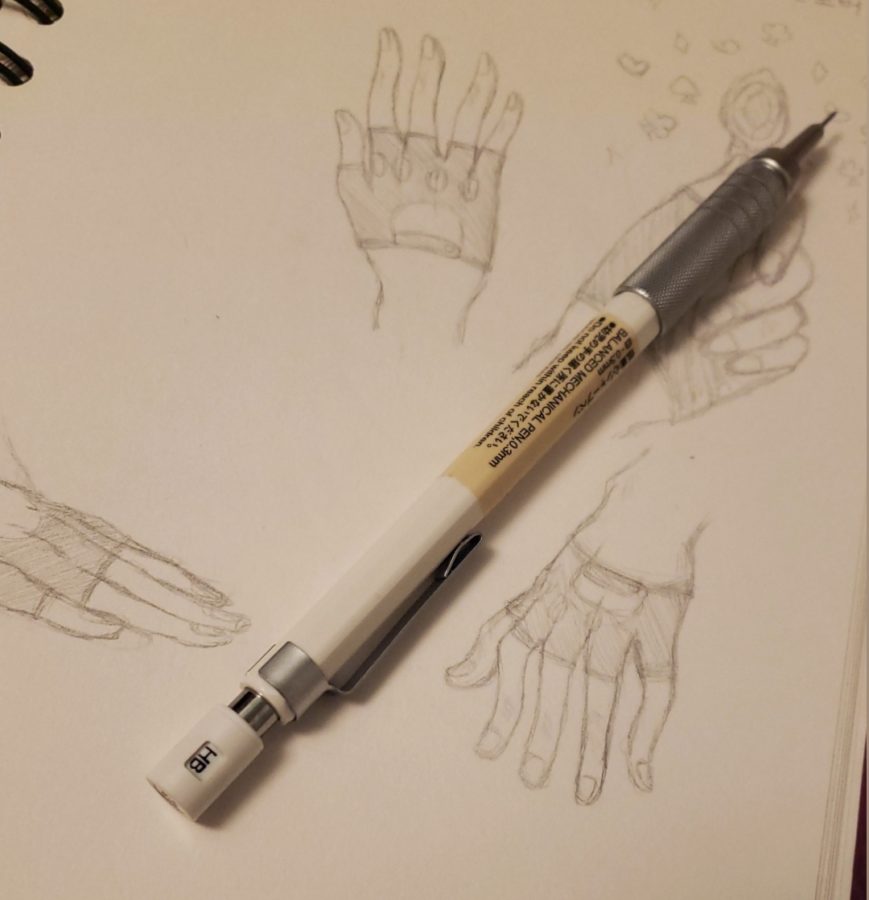The Benefits to Drawing
Drawing does more good than harm, even if you are a terrible artist.
June 5, 2023
In many classrooms, boredom seems to produce murals of graphite and ink. As lessons play like broken records for some, it is common for students to scribble in places like the margins of their notes, sides of their worksheets, surfaces of their desks (even though you shouldn’t), or even the skin of their arms. Whether simple shapes, favorite characters, or amazingly realistic eyes, a variety of pictures can be found. However, passing the time or tuning out of lessons aren’t the only things doodling is good for. Many people mistakenly believe that drawing is only a feasible activity for those who possess artistic talent, but this is not true—drawing is drawing, no matter one’s level of talent. With enough time and practice, almost anyone can improve their artistic skills. Along with being a creative outlet, drawing offers a wide array of mental and physical benefits.
Firstly, drawing is beneficial due to its ability to effectively stimulate multiple areas of the brain simultaneously. Through studies, it has been discovered that “people who regularly engage in artistic hobbies or careers” experience an increase of gray matter in the brain (21-draw.com). For those who are unaware, gray matter is vital to the health and efficiency of the brain; more gray matter leads to improved control of functions such as movement, memory, and emotions (National Library of Medicine).
Although a possible given, drawing improves creativity. Art requires utilization of the imagination, and allows us to materialize thoughts and emotions visually. As depicted in graphic novels, animations, video games, and even ancient markings, drawings can convey elaborate and vivid stories. Ever had an idea or vision that you just can’t put into words? Draw a picture! After all, a picture is worth a thousand words.
Drawing is also a great way to release stress—a calm yet somewhat complex activity, it helps one fully channel his or her focus on a project rather than the anxieties of life. As former Wrangler cartoonist Emily Eslao (12) states, “it’s a good creative outlet and it’s gratifying to dedicate time to.” Even a quick sketch everyday can enhance mental health. Aside from the creative and stimulating aspects of drawing, the simple feel of pencil on paper—or stylus on smooth screen—can be therapeutic in a sense. Especially if one sets and follows through with goals to build his or her drawing skills, the activity can also provide a sense of motivation. “A big benefit [of drawing] is the improvement that occurs over time and the satisfaction that comes with it,” Emily Eslao (12) adds.
Overall, there are many significant pros and noteworthy reasons as to why one should draw. One can derive such peace of mind from the activity not only because of its pacifying nature, but in large part due to the freedom it provides as well. Often, we feel mentally constrained or oppressed; drawing helps to combat those feelings that lead to or worsen burnout. If you have the time and feel restless, try your hand at drawing—you may discover a new hobby, or even a career.






































